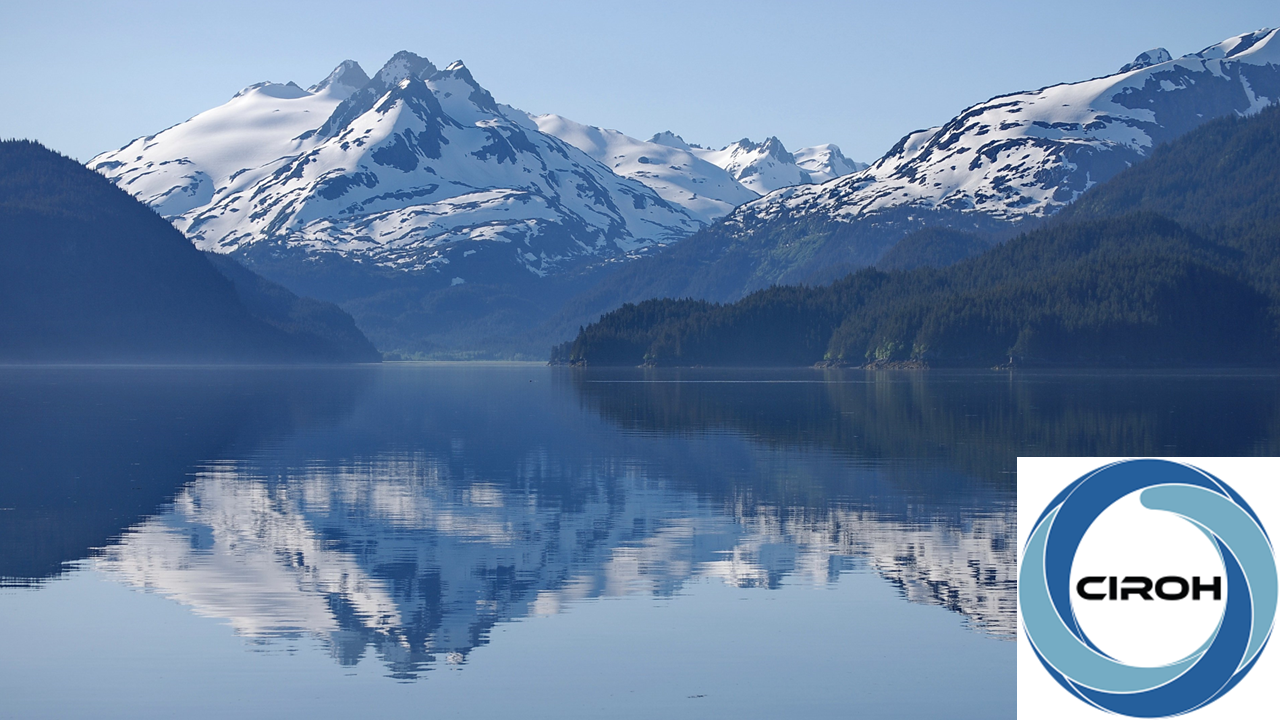Problem Statement
Snowpack, measured in the form of snow-water equivalent (SWE), is a fundamental component of the water supply in mountainous regions and the hydro-connected downstream environments.
SWE represents the quantity of liquid water within a snowpack and is one of the key parameters in predicting snowmelt runoff and corresponding water supply forecasting.
Characterizing seasonal SWE dynamics, including peak SWE and the timing of snowmelt, supports estimates of in-stream peak flow timing, duration, and intensity.
Beyond environmental considerations, there is significant economic motivation to quantify available water stored as snowpack.
The value of the annual snowpack in the western U.S. can approach the order of a trillion U.S. dollars due to the resulting meltwater supporting agriculture, residential, and commercial purposes.
In spite of the economic and environmental factors, accurate estimation of SWE on a broad scale remains a longstanding challenge.
Recognizing the value of widespread SWE estimates and mountainous basin hydroclimate, there are several tools and methods for characterizing the quantity of frozen water stored in a snowpack to enhance seasonal water supply forecasting.
The U.S. Department of Agriculture (USDA) Natural Resource Conservation Service (NRCS) has installed over 900 automated snow telemetry (SNOTEL) in situ monitoring stations throughout the western U.S.
Many of the SNOTEL stations now exhibit a long-term historical observation record greater than 30 years, monitoring snow depth, SWE, and a number of climatic conditions such as precipitation, temperature, and wind speed.
Recent advancements in Light Detection and Ranging (LiDAR) on aircraft and uncrewed aerial vehicles (UAV) complement existing in situ SWE observations by extending snowpack characterization to the catchment scale.
Physics-based modeling techniques, such as in the National Oceanic and Atmospheric Administration's (NOAA) National Water Model (NWM), can demonstrate high accuracy in modeling various snowpack characteristics by simulating the mass and energy balance from inputs of solar radiation, wind, temperature, precipitation, and other variables.
Module Overview
This module will provide the learner with fundamental snow-hydrology terminalogy and the technical skills needed to conduct a seasonal snow analysis pursuant to water supply forecasting, covering snow terminology, snow observation systems, and snow modeling basics.
Section 1 is an introduction to key snow terminology relevant to water supply forecasting.
This section provides the foundation to work through the following sections and to successfully complete the module.
Sections 2 focuses on snow observation systems from the USDA National Resource Conservation Service (NRCS) SNOTEL network and spatial data products from the NASA Airborne Snow Observatory (ASO) mission.
Learners will undergo technical training on data retrieval, data processing, visualization, and analysis.
Section 3 introduces the concept of a physically-based snow model, using NOAA's NWM NOAH-OWP-Modular as an example.
The section will describe the fundamentals of the model including parameterizations, forcings, and outputs.
The modeling section will conclude with technical training on data retrieval, data processing, visualization, and analysis.
Section 4 is a comprehensive learning activity where the learner will apply the technical skills and knowledge gained throughout the module to evaluate the state-of-the-snowpack for the Hetch Hetchy Reservoir on the Tuolumne river in the Sierra Nevada mountains, a key water supply watershed for the greater San Franscico area.
Topics Covered
- Snow Terminology consistent with water supply forecasting
- USDA NRCS SNOTEL data retrieval, data processing, visualization, and analysis
- NASA data retrieval, data processing, visualization, and analysis
- NOAA NWM NOOH-OWP-Modular snow data retrieval, data processing, visualization, and analysis
- Analysis of the state-of-the-snowpack for key water supplying watersheds
Prerequisites
The targeted learners of the course are graduate students and/or advanced undergraduate students within the hydrological and earth sciences disciplines, as well as early career operational hydrologists.
A degree in a relevant field will satisfy the prerequisites for this module.
Learners will benefit from previous experience using Python, however, all of the data processing code provided will be sufficient to work through the examples and to enable the completion of the learning activity.
Learning Objectives
At the end of this module, students will be able to:
- Describe fundamental aspects of snow terminology, snow hydrology, and snow climatology.
- Retrieve and analyze operational snow observations to compare the current state of the snowpack to the historical mean for a watershed(s) of interest.
- Demonstrate differences between spatial model outputs and in-situ point observations considering mean catchment SWE and model performance errors for estimating potential catchment water availability.
Successful completion of these objectives will be accomplished through activities within each section.
Results from each activity will be recorded in specified results templates.
The results templates for each activity can be found at the beginning of each activity.
The results templates are organized such that results from one activity can easily be used in successive activities.
Suggested Implementation
All of the respective code, including virtual environment set up, is on the project's CIROH-Snow GitHub Repository .
Each section builds on the previous, hence, we recommend working through the modules in order.
Course Authors
Irene Garousi-Nejad
Research Scientist at the Consortium of Universities for the Advancement of Hydrologic Science, Inc. (CUAHSI)
igarousi@cuahsi.org
Dr. Irene Garousi-Nejad specializes in numerical simulations, climate and water data analysis, and cloud computing. Her research interests focus on water and snow modeling, geospatial data analysis, and the application of modern technology and big data to understand environmental processes and extreme events. She is a strong advocate for open science and open data, recognizing their importance in promoting transparency, collaboration, and inclusivity in the scientific community. Her goal is to contribute to the development of research and educational tools that support sustainable and equitable decision-making within the water community.
Ryan Johnson
Assistant Professor at the University of Utah
ryan.c.johnson@utah.edu
Dr. Ryan Johnson expands on Hydrological and Water Resources Management research at the University of Utah, leveraging the power of open-source software, an abundance of hydrological data, and machine learning to advance the skill of hydrological predictions. He is currently working on three key research efforts: 1) applying deep neural networks to advance the modeling of heterogeneous snow distribution in the Western US, 2) exploring multiple ML algorithms, including LSTMs, to extend the forecasting horizon of the National Water Model to a season-to-season resolution to support water supply forecasting, and 3) developing low-cost low-power snow monitoring systems to characterize catchment snow distribution within key water supply catchments. When not deep into Python, Dr. Johnson can be found exploring mountains with his mountain bike and fly rod in the summer or digging snow pits and skiing in the winter
Target Audience
The targeted learners of the course are graduate students and/or advanced undergraduate students within the hydrological and earth sciences disciplines, as well as early career operational hydrologists.
Expected Effort
The module developers estimate that this module will take between 10 to 15 hours to complete.
Course Sharing and Adaptation
This course is available for export by clicking the "Export Link" at the top right of this page. You will need a HydroLearn instructor studio account to do this. You will first need to sign up for a hydrolearn.org account, then you should register as an instructor by clicking 'studio.hydrolearn' and requesting course creation permissions.
Recommended Citation
Garousi-Nejad, Irene and Johnson, Ryan., (2025) Introduction to Seasonal Snow Observations, Modeling, and Analysis. CIROH. https://edx.hydrolearn.org/courses/course-v1:CIROH_HydroLearn+CVEEN6001+2025/about
Adapted From
Module adapted from Snow and Climate (KSU GEOG440) by Dr. Joshua Roundy and Dr. David Chandler.
This module transitions a focus from snow and climate to the fundamentals of snow observations and modeling for water supply forecasting in the Western US.
Complementing the change in snow-hydrological topic, there are more technical coding tasks and objectives designed to prepare advanced undergraduate and graduate students, along with hydrologists, for a career in operational hydrology.
Acknowledgments
This project received funding under award NA22NWS4320003 by National Oceanic and Atmospheric Administration (NOAA) Cooperative Institute Program to the Cooperative Institute for Research on Hydrology (CIROH) through the University of Alabama. The statements, findings, conclusions, and recommendations are those of the author(s) and do not necessarily reflect the opinions of NOAA.



